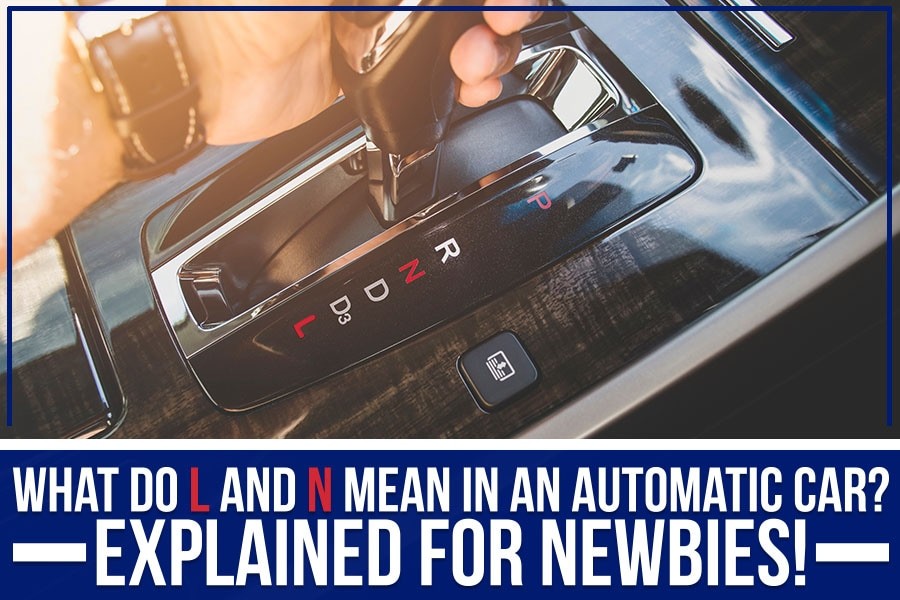Have you ever been behind the wheel of a car with an automatic transmission and noticed a series of letters and numbers like “P,” “R,” “N,” “D,” and “L” on your gear selector? If you’re new to driving or haven’t explored beyond the standard “Drive” mode, these symbols might seem a bit mysterious. At cars.edu.vn, we’re here to demystify these controls and help you become a more confident and informed driver. In this guide, we’ll focus specifically on “L gear” – what it is, when to use it, and why it’s a valuable tool in certain driving situations. Let’s dive in and understand the purpose of “L” gear in your car.
Decoding the Basics: Automatic Transmission Gears
Before we zoom in on “L gear,” let’s quickly recap the most common symbols you’ll find in an automatic car:
-
P – Park: This mode locks the transmission, preventing the wheels from turning. Always use “Park” when you are stopped and exiting your vehicle. It’s crucial to engage the parking brake as an extra safety measure, especially on slopes.
-
R – Reverse: Engage “Reverse” when you need to back up. Remember to always check your surroundings and proceed slowly when reversing.
-
N – Neutral: In “Neutral,” the engine is disengaged from the wheels, meaning the car can roll freely. “Neutral” can be used when stopped for short periods, but it’s generally recommended to use “Park” with the parking brake for safety. Avoid coasting in neutral downhill as it reduces engine braking and control.
-
D – Drive: This is your standard driving mode for most situations. In “Drive,” the automatic transmission will shift through all the gears as needed, optimizing for fuel efficiency and सामान्य driving conditions.
L Gear Explained: Low Gear for Specific Situations
Now, let’s focus on “L gear,” often referred to as Low gear. This mode is designed for specific driving scenarios where you need more engine power at lower speeds. Unlike “Drive” which aims for efficiency and smooth transitions through higher gears, “L gear” keeps the transmission in the lower gear ratios.
What does this mean practically?
When you select “L gear,” your car’s transmission will:
- Stay in the lower gears: The transmission will not shift to higher gears as quickly, or may not shift beyond a certain low gear at all.
- Increase engine RPMs: To maintain speed, the engine will run at higher revolutions per minute (RPMs) compared to driving in “D” at the same speed.
- Provide more engine braking: When you release the accelerator, the engine will help slow the car down more aggressively, reducing the need for constant braking.
- Deliver more torque to the wheels: Lower gears multiply engine torque, providing more power for tasks like climbing hills or pulling heavy loads.
When to Use L Gear:
“L gear” is not for everyday driving. It’s specifically designed for situations that demand more power or control at slower speeds. Here are the primary scenarios where using “L gear” is beneficial:
-
Climbing Steep Hills: When ascending a steep incline, “L gear” provides the necessary engine power and torque to climb effectively without straining the engine or transmission. It prevents the transmission from shifting up to higher gears where the engine might lack power, causing the car to struggle or lose momentum.
-
Descending Steep Hills: Going downhill, “L gear” utilizes engine braking to help control your speed. This is crucial for safely descending steep slopes, especially with heavy loads, as it reduces reliance on your brakes and prevents them from overheating and potentially failing.
-
Towing or Hauling Heavy Loads: When towing a trailer, boat, or carrying a heavy load, “L gear” provides the extra power needed to move the weight and prevents the transmission from constantly shifting up and down, which can cause wear and tear.
-
Driving in Deep Snow or Mud: In slippery conditions like deep snow or mud, “L gear” can provide better control and prevent wheel spin by delivering more controlled power to the wheels at lower speeds. It helps maintain traction and momentum in challenging terrains.
 Automatic transmission gear selector highlighting 'L' for Low gear
Automatic transmission gear selector highlighting 'L' for Low gear
Important Considerations for Using L Gear:
- Fuel Efficiency: Driving in “L gear” will significantly reduce your fuel economy. The engine works harder and at higher RPMs, consuming more fuel. Use “L gear” only when necessary and switch back to “D” for normal driving.
- Speed Limitations: “L gear” is designed for low-speed situations. Do not drive at high speeds in “L gear” as it can over-rev the engine and potentially cause damage.
- Engine Noise: You’ll notice the engine is louder in “L gear” due to the higher RPMs. This is normal, but it’s another indicator that “L gear” is not intended for prolonged use at normal driving speeds.
Mastering Your Automatic Transmission
Understanding “L gear” is another step towards becoming a more skilled and knowledgeable driver. While “Drive” will handle most of your daily commutes, knowing when and how to use “Low gear” can significantly improve your control and safety in specific, challenging driving situations.
Explore your car’s owner’s manual for more details on your specific vehicle’s transmission and recommended usage of “L gear.” And for more automotive insights and driving tips, keep visiting cars.edu.vn – your trusted resource for car knowledge!